The 10 Best Motorcycle Helmets You Can Buy Today
Much more than the common brain bucket
Your head really is the most important thing to keep safe, whether you’re on a motorcycle or not, as your ECU is inside it. You don’t have to spend as much as most of these 10 cost for a truly great helmet, but if our mission here is to seek out the best motorcycle helmet, well, you have to open up the purse a little. The following are some of the best money can buy – including some modular options for street riders or those who like the versatility flip-ups provide. And also bear in mind that fit is the number-one determinant in which helmet is best for each individual. If you can try helmets on in a real store, do so, and please give that store a chance to match your best online price. We hereby present what the MO staff collectively agree are the ten best motorcycle helmets that have brought the game forward in terms of safety, comfort, design, practicality, or all of the above.
(Our lead shot is the HJC RPHA11 Pro Otto Minions graphic, available for pre-order now. You’ll find the same excellent lid in Captain America colors below.)
Table of Contents
1. 6D ATS-1R
For decades helmet construction was basically the same: a polystyrene shell surrounded your dome and was built to crush upon impact, absorbing the crash force so your head won’t have to. But as motorcycles evolved, helmets didn’t. Until 6D arrived. First came the ATS-1 helmet; now there’s the completely reworked ATS-1R. Using a new and improved version of its ODS (Omni-Directional Suspension) system reduces energy transfer to the head/brain even more than before, says 6D, and makes the R even lighter. Basically, we’ve got tiny springs wedged between two EPS liners, which 6D claims offers unsurpassed security. Read the review here.
Bottom Line
- The latest word in protection, according to 6D
2. AGV K-6 S
The AGV K6 S helmet combines MotoGP-inspired technology with all-around road versatility, making it suitable for sport, touring, and everyday city rides. Constructed with a carbon and aramid fiber shell, it offers top-tier protective performance while being the lightest full-face road helmet in the world. Exceeding ECE22.06 standards by 36%, the K6 S is designed under AGV's “Extreme Safety” protocol for unmatched protection. Its aerodynamic design is fine-tuned in a wind tunnel to ensure exceptional air penetration and stability, reducing buffeting at high speeds. Premium interiors provide waterproofing, ventilation, and superior comfort for long rides, while adjustable forehead and chin vents, operable with gloves, enhance airflow control. With a good balance of safety, comfort, and style, the K6 S also is one of the more affordably priced helmets in this lineup, starting at $549.99 for solid colors.
Bottom Line
- Haute Italian style and performance for medium money
3. AGV Tourmodular
The AGV Tourmodular helmet is a modular design built for safety and comfort on long rides. Its carbon, aramid fiber, and fiberglass shell provide protection reduce weight to a minimum while meeting ECE2206 standards. A 4mm-thick visor enhances durability and visibility, offering a 190° horizontal and 85° vertical field of view. Interior fabrics wick moisture, and waterproof synthetic leather piping keeps water out. Four adjustable air vents and 16 internal channels optimize airflow, while its aerodynamic design minimizes turbulence and fatigue, even at high speeds. The helmet is safe for use in an open configuration, meeting P/J homologation. Integrated DMC technology, developed with Cardo, supports intercom for 15 riders over 6 km. Features include an Optical Class 1 visor, removable sun visor, and Max Pinlock 120 antifog system, ensuring clear vision in all conditions. Designed for comfort and practicality, it suits diverse riding needs.
Bottom Line
- Super-light and aero modular
4. Arai Regent X
Arai’s reputation is second to none when it comes to helmet safety and quality. Two years ago the Corsair-X was in this space, the same helmet the racers wear on MotoGP and WSBK grids. The new-for-2020 Regent X is a lot like the Corsair-X, but designed around a new shell with an even smoother shape. The same plush comfort, protection and features expected of the brand are here but also something else; the Regent is much easier to get on and off your head. The new reinforcing Hyper Ridge and VAS shield system lower the center of gravity, and the bottom of the new shell flares out 5 mm to make getting your head in and out of the helmet easier. It’s a subtle but really noticeable difference that makes the Regent way better to deal with in everyday use than the full-race Corsair. Naturally, the Regent still meets Arai’s own safety standards, which surpass both DOT and Snell. The Regent isn’t cheap, but remembering that every Arai is handmade by an expert craftsman in Japan softens the blow. It’s available in a bunch of solid colors and graphics like the Sensation pictured – and we reviewed it here.
Bottom Line
- Handmade Japanese helmet art
5. Bell Race Star Flex DLX
Back in the day, the Bell Star was the helmet to put on your head because it was the only helmet to put on your head. Fast forward a few decades and Bell’s new flagship is the Race Star Flex. Bell’s lightest and most advanced helmet, the Race Star Flex features a 3K carbon fiber shell that makes it light. Helping protect your noggin from impact forces, the Flex design incorporates three different layers of material at different densities – EPO, EPP, and EPS – to best absorb impact from low-, mid-, and high-speed crashes. From there, magnetic cheek pads, a huge field of view (especially when in the tuck position), a sweat-wicking liner, and excellent ventilation all contribute to the helmet’s premium feel. Finally and best of all, DLX denotes that a PanovisioProTint Photochromatic shield is standard equipment. MO’s full review is here.
Bottom Line
- Photochromatic shield is the bomb
6. Bell SRT-Modular
Evans Brasfield himself reviewed the Bell SRT-M three years ago, and liked it enough to call it a worthy inclusion to this list of best motorcycle helmets. You can tell a lot of thought went into the design of Bell’s premium modular helmet, even though it doesn’t carry a premium price tag. From its aerodynamic shape, to the vents – even down to the shape of the internal flip-down sun visor and its lip extension that keeps turbulent air from coming underneath the chin bar and aggravating your eyes, this is a great lid. With correctly placed grooves for glasses and pockets for communication systems, Bell thought of everything when it came to designing this practical, flip-front street helmet.
Bottom Line
- You could spend more, but...
7. HJC RPHA 1N
This one is for the race fans out there. We've got the HJC RPHA 1N Helmet, developed with input from top MotoGP and World SBK athletes, which means that it meets the latest FIM Racing homologation standards, including resistance to rotational impacts. Its shell features P.I.M. Plus (Premium Integrated Matrix Plus) reinforcement materials, utilizing carbon and carbon-glass hybrid fabric for improved shock resistance and keep weight down. An aerodynamic design incorporates the Advanced Channeling Ventilation System (ACS), with 5 intake and 4 exhaust vents, ensuring optimal airflow. The moisture-wicking, antibacterial SilverCool liner and cheek pads enhance comfort and hygiene, and glasses grooves accommodate eyewear. The anti-scratch HJ-35 face shield is Pinlock- and tear-off-ready, with a quick attachment system for easy replacement. Additional features include removable, washable pads, speaker pockets for Bluetooth, a Double D-ring closure, emergency release cheek pads, a breath deflector, and chin curtain. Certified to DOT FMVSS 218, ECE 22.06, and FIM standards, the RPHA 1N is squarely aimed those who enjoy a more spirited pace in the canyons or track day junkies. Pricing starts at $699.99 for solid colors.
Bottom Line
- For fans of Fabio Quartararo and sportbikes.
8. Shoei RF1400
When it comes to a fully-featured street helmet, the Shoei RF name is legendary, and the trend continues in the new-for-2020 RF1400. The new SNELL-certified RF is the latest iteration of the helmet Shoei’s been perfecting since 1984, and it’s lighter, more aerodynamic, quieter, and better ventilated than ever. Dual-density EPS inside a shell that’s a matrix of hand-laid interwoven layers of fiberglass and light-weight organic fibers results in the safest RF ever, as well, in a helmet that fits many intermediate oval heads like none other. Naturally the interior is as plush as you’d expect and completely removable, washable, and customizable. E Brasfield reviewed the new RF1400 here.
Bottom Line
- Always a solid bet
9. Shoei Neotec III
The Shoei Neotec 3 is a yet another modular helmet that will satisfy a wide swath of riders because let's be honest, flipping your lid up to share a quick word with a pal, take a swig of water, or nibble a snack is the extremely convenient. Its Multi-Ply Matrix AIM shell is lightweight yet impact-resistant, meeting DOT FMVSS 218 and ECE 22.06 standards. Dual homologation allows safe use with the chin bar open or closed. Aerodynamic design and a wind tunnel-tested ventilation system ensure reduced drag, noise, and optimal airflow. A Pinlock EVO-ready CNS-3 face shield, integrated sun visor, and 3D Max-Dry interior deliver clear visibility and moisture-wicking comfort. Fully removable and washable, the interior enhances long-term usability. Compatible with the SENA SRL3 system, it supports Bluetooth connectivity for seamless communication. Featuring a micro-ratchet chin strap for ease of use, the Neotec 3 is perfect for touring and everyday rides. We dig new Neotec 3 quite a bit and E-i-C Ryan Adams even reviewed it for our In Gear review series.
Bottom Line
- Pricey, but you're worth it.
10. Shoei X-Fifteen
Three Shoei helmets? Surely, you'll notice a trend, kind friends. The premium Japanese helmet manufacturer has released its latest top-shelf racing helmet, designed with the input of MotoGP's Marc Marquez. Shoei continues to invest in aerodynamic features with its redesigned, lightweight AIM+ (Advanced Integrated Matrix Plus) shell that meets DOT FMVSS 218, ECE 22.06, and FIM standards. The helmet’s aerodynamic design, developed in Shoei’s wind tunnel, reduces drag and lift at high speeds, while a sophisticated ventilation system with multiple intake and exhaust vents maintains airflow for optimal comfort at highspeed. In fact, it's one of the most stable helmets we've used to date. The X-15 features an anti-scratch CWR-F2R shield, Pinlock EVO lens compatibility, and a tear-off-ready design for clear visibility in all conditions. The fully removable and washable 3D Max-Dry liner enhances moisture-wicking and comfort. With double D-ring chin strap closure and emergency release cheek pads, safety and convenience are prioritized. Available in sizes XS to XXL, the Shoei X-15 matches the high standard in construction, fitment, and quality we've seen come from the Japanese firm over the years, especially with its flagship racing helmet.
Bottom Line
- Go fast, young man. Go fast.
FAQ
How do I know if my motorcycle helmet is safe?
In the US, a real helmet has to pass the Department of Transportation’s inspection and then wear a DOT sticker to prove it. Lots of helmets from Europe have passed CE or ECE tests and wear those stickers (in addition to the DOT one when they’re imported to the US). A Snell sticker indicates an even more rigorous standard, and can start long debates over whether Snell certification makes helmets too stiff for street use. But stickers are all easily faked and if you’re not experienced enough to tell a cheap knock-off from the real thing, the best thing to do is visit a helmet retailer, look around, and ask the knowledgeable people who work there.
Do motorcycle helmets expire?
The Snell Foundation says: Unused helmets stored in good condition do not automatically expire after five years. Replacing helmets every five years is a judgement call based on testing helmets used by the California Highway Patrol by Dr. George Snively. Wear and tear, the simple act of putting on and taking off helmets, damage the comfort pads and energy absorbing foam liner over time. Helmets with worn-out pads are at least one to two sizes larger than helmets in new condition. A poorly fitted helmet makes it more likely that the helmet will shift too much or even come off the head during a crash impact. For these reasons, Snell recommends replacing helmets after five years of normal use.
Shoei’s official word is: A helmet should be replaced 5 years from date of purchase or 7 years from date of manufacture, whichever comes first. This replacement recommendation is based on a consensus by both the helmet manufacturers and safety standards. Glues, resins and other materials used in helmet production can affect liner materials. Hair oils, body fluids and cosmetics, as well as normal “wear and tear” all contribute to helmet degradation. Petroleum based products present in; cleaners, paints, fuels and other commonly encountered materials may also degrade materials used in many helmets possibly degrading performance. Additionally, experience indicates there will be a noticeable improvement in the protective characteristic of helmets over a five-year period due to advances in materials, designs, production methods and the standards. Thus, the recommendation for five-year helmet replacement is a judgment call stemming from a prudent safety philosophy.
So, just because a helmet is old doesn’t mean it’s unsafe if it’s still in good shape. Helmets are kind of like shoes. Your old ones might have plenty of miles left, but you see something flashy and new and have to have it, which is why most helmets get replaced now and then. New helmets also give motojournalists a reason to go on living.
Can you wear any helmet on a motorcycle?
Any helmet is probably better than none at all, but a football helmet isn’t going to keep bugs and rocks out of your eyes like a good full-face motorcycle helmet (or even a bad one), and a bicycle helmet isn’t designed to protect your brain at speeds faster than you’re able to pedal. It’s the EPS liner (expanded polystyrene) inside most motorcycle helmets that absorbs impacts, not the hard outer shell. And most cheap beanies have very little EPS liner if any – usually just a layer of padding. Those helmets might be good to keep your scalp dry in a light rain, but they’re nigh on useless in an actual crash where your head hits the ground hard, or a tree. So yes, in states without helmet laws, you can wear or not wear any helmet, but a real motorcycle helmet offers the most protection by far. Nobody at MO would ride without one.
Recent updates:
AGV K6 S: New graphics added
HJC RPHA 1N: New graphics added
Shoei RF1400: New model replaces RF1200
Shoei X-Fifteen: New graphics added
Additional resources:
Best Adventure Motorcycle Helmets
Best Motorcycle Racing Helmets
Best Motorcycle Helmets for Harley Riders
We are committed to finding, researching, and recommending the best products. We earn commissions from purchases you make using the retail links in our product reviews and other articles. Learn more about how this works.
Become a Motorcycle.com insider. Get the latest motorcycle news first by subscribing to our newsletter here.
More by John Burns
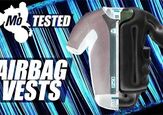

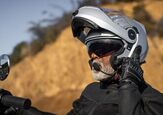


























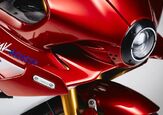
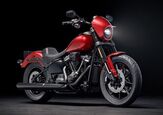
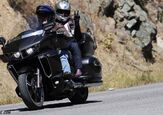

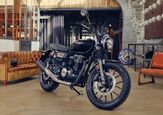
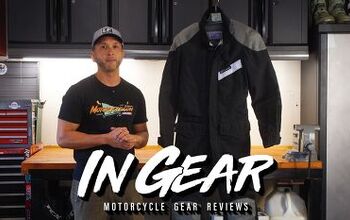












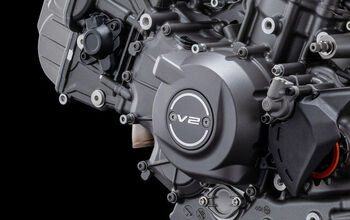


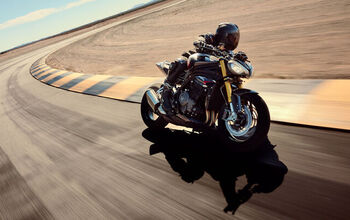
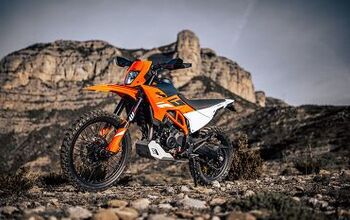
Comments
Join the conversation
I'm on my second Quin Design -replace at 5 years. Very advanced tech, bluetooth, SOS beacon, crash detection and notifications, and more. EU, DOT, race certifications. Beautifully finished and gorgeous, durable interior. 50% off sale got me the carbon for just $350.00. Not sure if the sale is still on, but here's the site:
https:/www.quintessential.design/
The ease of putting on the Regent-X can't be overstated. I use a cochlear implant. With the right size, I can put this helmet on without issue and still hear. The processor stays in place. Taking it off usually requires that I close the visor to catch the device as it gets dislodged. That's fine. It's better than not riding or going without (illegal in MD). It's nearing two years old and visor replacement, while pricy with a new pinlock insert, is simple in the extreme. Great helmet.